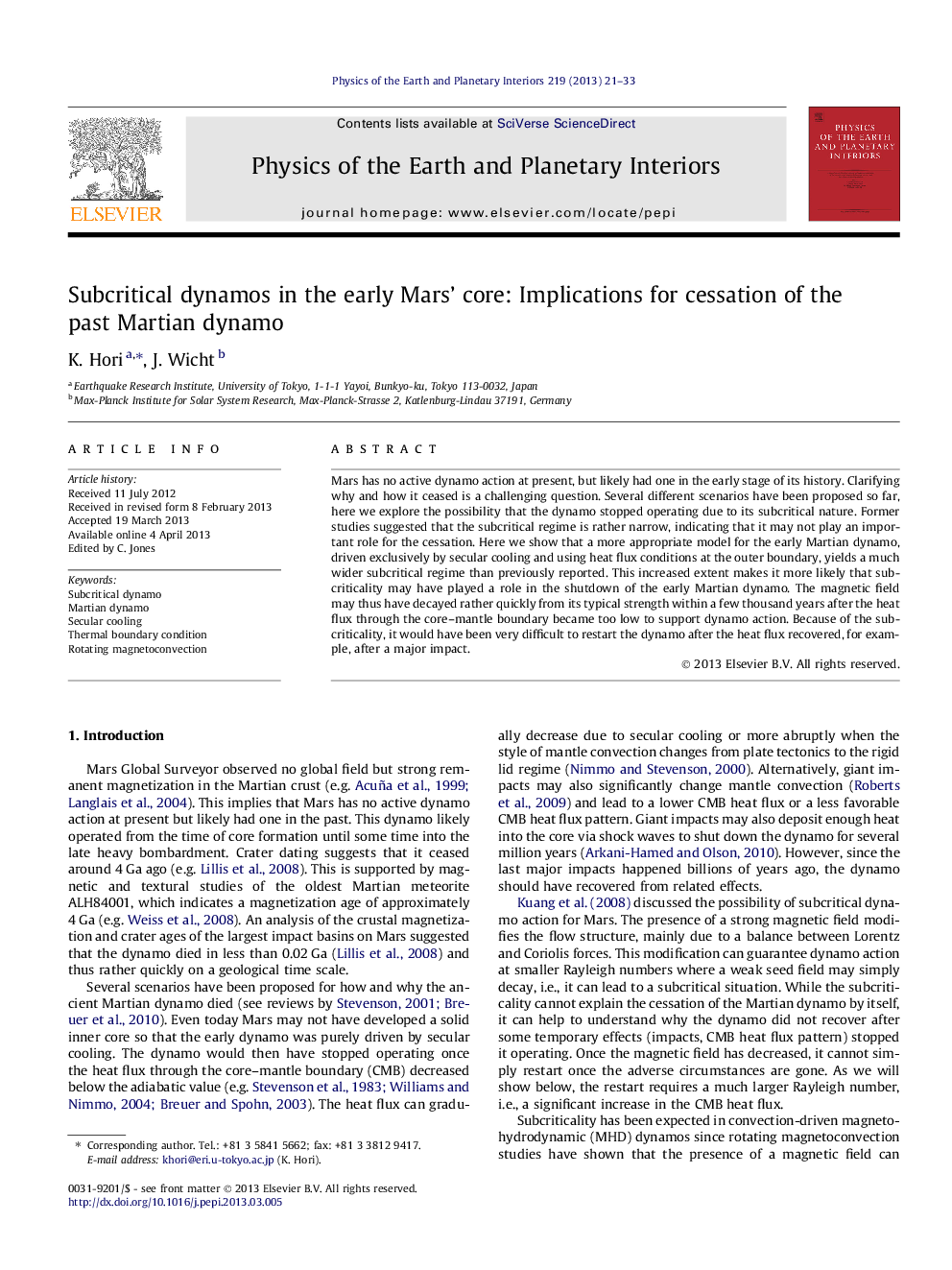| Article ID | Journal | Published Year | Pages | File Type |
|---|---|---|---|---|
| 4741722 | Physics of the Earth and Planetary Interiors | 2013 | 13 Pages |
•We explore the possibility that the Mars’ dynamo stopped operating due to its subcriticality.•Former studies suggested that the subcritical regimes were rather narrow.•We show that a more appropriate model for the early Martian dynamo yields a wider subcritical regime.•The dynamo is driven by secular cooling with fixed constant heat flux at the outer boundary and a smaller aspect ratio.•This effect may thus have played a role in the shutdown of the early Martian dynamo.
Mars has no active dynamo action at present, but likely had one in the early stage of its history. Clarifying why and how it ceased is a challenging question. Several different scenarios have been proposed so far, here we explore the possibility that the dynamo stopped operating due to its subcritical nature. Former studies suggested that the subcritical regime is rather narrow, indicating that it may not play an important role for the cessation. Here we show that a more appropriate model for the early Martian dynamo, driven exclusively by secular cooling and using heat flux conditions at the outer boundary, yields a much wider subcritical regime than previously reported. This increased extent makes it more likely that subcriticality may have played a role in the shutdown of the early Martian dynamo. The magnetic field may thus have decayed rather quickly from its typical strength within a few thousand years after the heat flux through the core–mantle boundary became too low to support dynamo action. Because of the subcriticality, it would have been very difficult to restart the dynamo after the heat flux recovered, for example, after a major impact.
